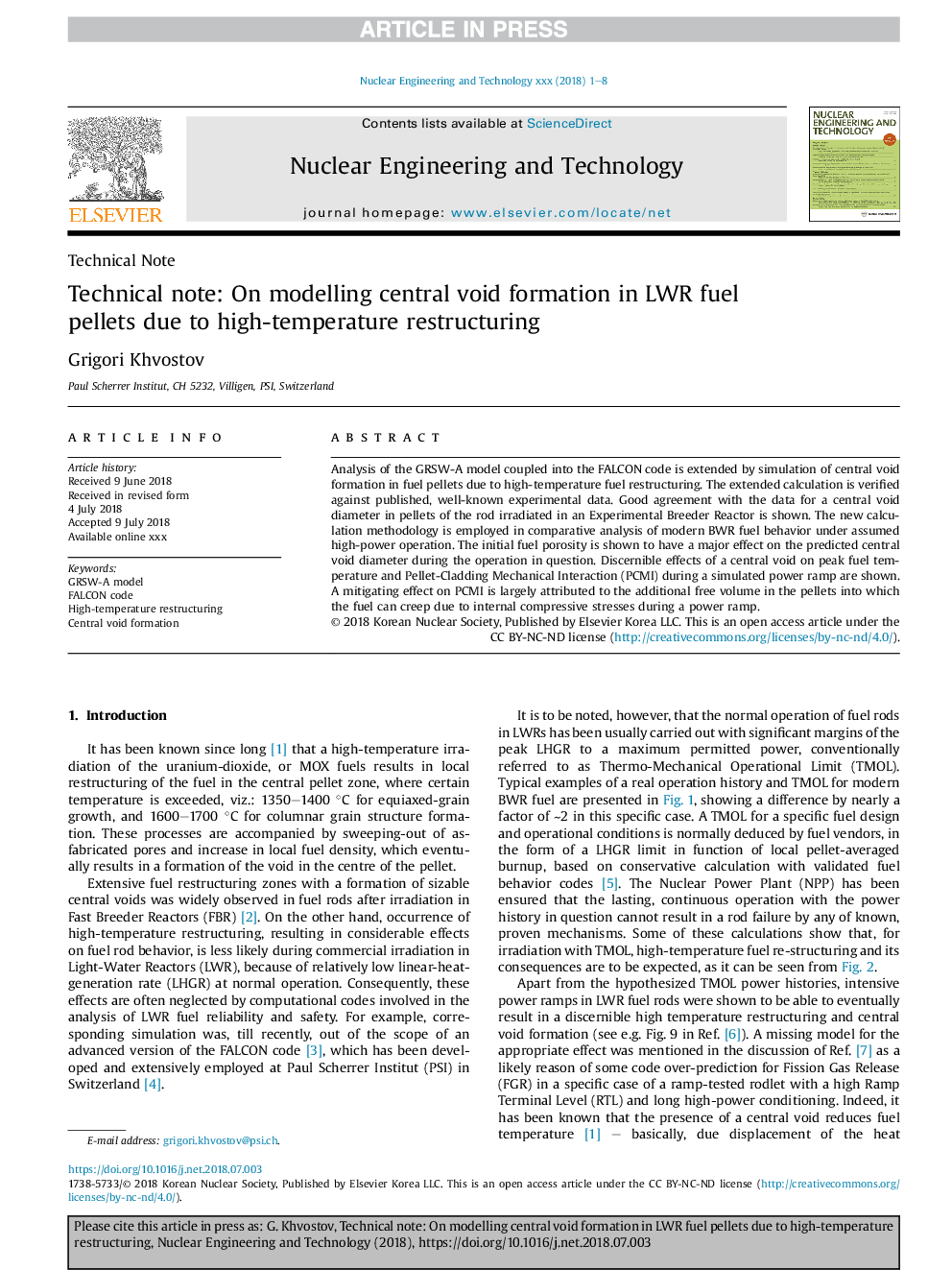| Article ID | Journal | Published Year | Pages | File Type |
|---|---|---|---|---|
| 8961706 | Nuclear Engineering and Technology | 2018 | 8 Pages |
Abstract
Analysis of the GRSW-A model coupled into the FALCON code is extended by simulation of central void formation in fuel pellets due to high-temperature fuel restructuring. The extended calculation is verified against published, well-known experimental data. Good agreement with the data for a central void diameter in pellets of the rod irradiated in an Experimental Breeder Reactor is shown. The new calculation methodology is employed in comparative analysis of modern BWR fuel behavior under assumed high-power operation. The initial fuel porosity is shown to have a major effect on the predicted central void diameter during the operation in question. Discernible effects of a central void on peak fuel temperature and Pellet-Cladding Mechanical Interaction (PCMI) during a simulated power ramp are shown. A mitigating effect on PCMI is largely attributed to the additional free volume in the pellets into which the fuel can creep due to internal compressive stresses during a power ramp.
Related Topics
Physical Sciences and Engineering
Energy
Nuclear Energy and Engineering
Authors
Grigori Khvostov,
